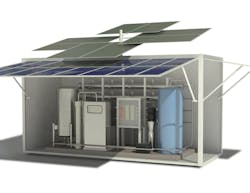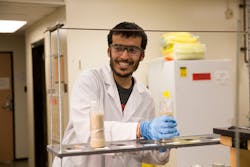The National Science Foundation has invested $55.5 million in three new flagship Engineering Research Centers that it says will address national challenges in energy, sustainability and infrastructure.
“The Engineering Research Centers program is one of NSF’s signature activities, with far-reaching effects on future technology and innovation,” says Pramod Khargonekar, NSF assistant director for engineering. “The ERCs combine multi-disciplinary research excellence with broad academic and industry experience, and provide unique environments to educate the engineering leaders of tomorrow.”
The NSF is focusing on innovations that improve the affordability, availability, quality and resilience of infrastructure services that will enhance the nation’s economic competitiveness.
READ ALSO: MIT Researchers Look At Graphene For Durable Membrane Filtration
Off-Grid Drinking Water
The NSF Nanosystems Engineering Research Center for Nanotechnology Enabled Water Treatment Systems (NEWT) will be led by Rice University in partnership with Arizona State University, the University of Texas at El Paso and Yale University.
The NEWT Nanosystems ERC will pursue high-performance and easy-to-deploy water treatment systems that can turn both wastewater and seawater into clean drinking water. The modular treatment systems, which will need less energy and fewer chemicals, will safely enlist the selective properties of reusable engineered nanomaterials to provide clean water at any location or scale. NEWT’s water-treatment systems will be compact enough to fit on the back of a tractor-trailer.
NEWT’s water-treatment systems will be compact enough to fit on the back of a tractor-trailer. (Photo Credit: NEWT/Rice University)
Compact Mobile Power
The NSF Engineering Research Center for Power Optimization for Electro-Thermal Systems (POETS) will be led by the University of Illinois at Urbana-Champaign in partnership with Howard University, Stanford University and the University of Arkansas.
The POETS ERC aims to pack more power into less space for electrical technologies on the move by integrating novel 3-D cooling circuitry, power converters and algorithms for smart power management. Their work aims to enable the manufacture of lighter, more compact and more efficient power electronic systems for cars, airplanes, construction equipment, handheld tools and other mobile applications.
The POETS ERC aims to pack more power into less space for electrical technologies on the move by integrating novel 3-D cooling circuitry, power converters and algorithms for smart power management. Shown here is a spatial model of thermal loads generated in a candidate electronic system. The distribution of temperature is superimposed on the two-dimensional layout of individual chip sets. (Photo Credit: Professor Alan Mantooth at University of Arkansas)
Nature-Inspired Soil Engineering
The NSF Engineering Research Center for Bio-mediated and Bio-inspired Geotechnics (CBBG) will be led by Arizona State University in partnership with the Georgia Institute of Technology, New Mexico State University, and the University of California, Davis.
The CBBG ERC will investigate natural underground biological processes to engineer the ground in ways that reduce construction costs and environmental impacts, while mitigating natural hazards and existing environmental degradation. Transformational new ground engineering methods will improve the sustainability and resiliency of civil infrastructure systems, including bridges, buildings, underground construction and resource exploration.
The CBBG ERC will investigate natural underground biological processes to engineer the ground in ways that reduce construction costs and environmental impacts, while mitigating natural hazards and existing environmental degradation. Transformational new ground engineering methods will improve the sustainability and resiliency of civil infrastructure systems, including bridges, buildings, underground construction and resource exploration. (Photo Credit: Jessica Hochreiter/Arizona State University)





